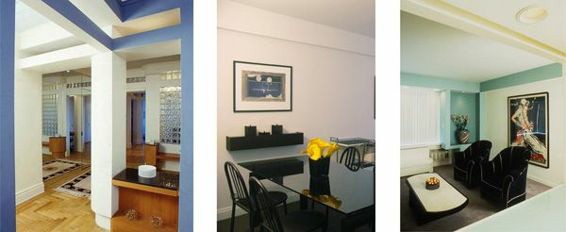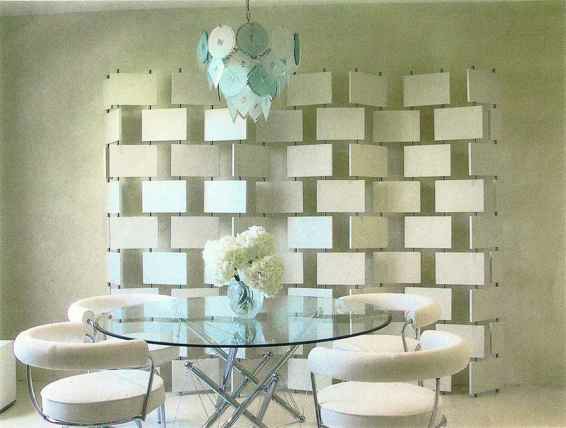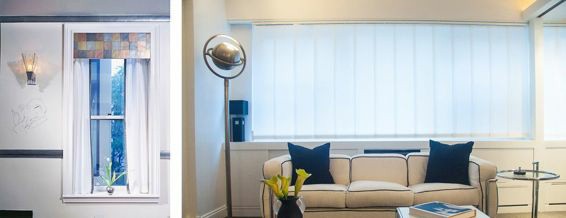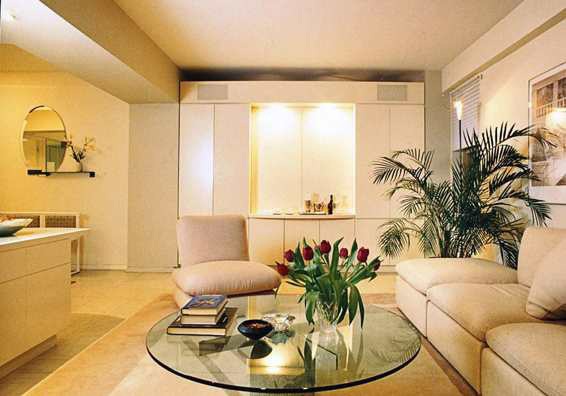
Interior design is about much more than merely having good taste. Designing elegant and chic interiors requires knowledge, resourcefulness and creativity, especially in small spaces.
As with most art forms, interior design is highly subjective; however, with the right focus and planning, it can be an exciting and cost-effective adventure with instant returns and extraordinary, long-lasting results — in other words, a profitable investment.

Many of the reoccurring concepts cited throughout this guide relate to the following four interconnected design theories, which contribute significantly to the end result of the suggested tips. If applied properly, these strategies provide valuable benefits, such as enhanced space, comfort, harmony, interest, function and aesthetic appeal.

When designing your home, the goal should be to love how you feel when you walk through your door, each and every time.
Add Pops of Your Favorite Color to Unusual Places

One fun technique is to use a splash of your favorite color in an unexpected place. This method works best in settings where the furniture and walls are neutral, meaning colors such as white, black, gray, beige or ivory. (In general, neutral colors quiet a space by making it more recessive and less chaotic.) A pop of color may seem like a small change — and it is — but it packs a strong punch.
SELECT THE RIGHT FURNITURE COLORS

An apartment’s furniture-color scheme should, for the most part, be consistent from room to room. Keep in mind that — like what you learned about paint — various factors impact furniture color, such as the amount of light in a room or the color of surrounding objects. A gray sofa may look pure gray in a store but blue at home if you position it next to furniture that accentuates its blue tones. Likewise, because the eye mixes and blends adjacent colors, if you place a gray couch next to a brown wall, the gray will appear dramatically different than if placed against a white or blue wall. Request fabric swatches and see how the fabric colors respond to your apartment. By paying attention to the amount of light that enters a room.
CHOOSE FURNITURE THAT IS PROPORTIONAL TO YOUR SPACE


A room needs to be balanced with furniture that is proportionally sized to fit the space. In a small room, large and bulky upholstered furniture will visually shrink the interior. Instead, when designing small spaces, select pieces that look airy. This will de-emphasize the furniture and make the space appear larger and more open. You can also soften the room by using rounded pieces as opposed to those that are more angular. Additionally, smaller-scale furniture, such as a sofa that is 7 feet long instead of 8 feet, will fit the space better and allow for more room around the piece.
UNDERSTAND YOUR WINDOW TREATMENT OPTIONS

If used properly, window treatments can enhance the aesthetics of the apartment by serving as a focal point, framing the windows and highlighting the outside vista.
Use Mirrors to Enhance Small Spaces
Mirrors are particularly valuable in small spaces. In addition to having decorative and functional uses, they can enhance lighting, capture unique views, enlarge spaces and add balance to a room. To take advantage of these benefits, it is important to understand how to properly place mirrors and how they can affect your space.

LIGHTING

Proper light improves the look and feel of any space and allows you to play with the theme of your home. The wrong kind of lighting can make your home appear cold and small and create shadows that darken the room. Choosing a welcoming lighting scheme and using several smaller, warm lamps (rather than bright overhead lighting) will keep the atmosphere friendly. Regardless of room size, creating a cozy space is challenging. For smaller apartments, downlights or architectural lighting may be more appropriate in particular instances, but the use of table or standing lamps will add a layer of intimacy.
INSTALL DOWNLIGHTS FOR A CLEANER, MORE DISCREET LOOK
Downlights are recessed lights (typically round) that are built directly into hollow openings or spaces within the ceiling. They cast narrow beams of light and differ from overhead fixtures in that they are often smaller and embedded within the ceiling or a similar surface, such as within the top of a niche or cabinet. As these types of lights do not protrude and are somewhat hidden, they provide a cleaner, more discreet look while also taking up less space. The advantage of using downlights as opposed to other lighting schemes is that this type of lighting reaches spaces that are generally smaller, darker and harder to illuminate, such as corners and counters.

These lights can be used for general ambient lighting based on how many are installed and where they are located. Depending on the size of the downlight and the bulb, a single downlight can cast as much as 150 watts of light into a room. For ceilings that are too low to accommodate an overhead fixture (something common in smaller spaces), downlights can be instrumental. Downlights can also be used for focused task lighting if they are placed directly over a specific wall or object. For example, downlights placed strategically in niches can accentuate both an object and the wall into which it is placed, thus creating a decorative enhancement. A more functional application is to install a small downlight in a closet or within cabinetry to illuminate a specific area and improve visibility without much disruption to the space.
INSTALL SCONCES FOR DECORATIVE AMBIENT LIGHTING AND SPACE-SAVING CAPABILITIES

Sconces are highly decorative light fixtures that are affixed directly onto the wall with no base or other apparent form of support. They come in a variety of materials and finishes and provide powerful multi-directional ambient lighting. In addition, they serve as a great solution for those who don’t have electrical capabilities in the ceiling.
USE COLOR TO CREATE VISUAL TRICKS

Color can be used to make a space look bigger, define interior areas and visually correct a room’s size imbalance. The following examples show how.
UNDERSTAND HOW TO ARRANGE YOUR FURNITURE

Arranging furniture may seem like a simple exercise, but a professional interior designer’s deeper knowledge of more complex concepts, such as spatial relationships, circulation, direction, balance and flow, is the key that ties everything together and transforms a room into a harmonious, artistic design.
Establishing proper circulation in a studio or one-bedroom apartment can be complicated because the lack of boundaries can overwhelm furniture. Boundaries are important for helping to define space. Furniture pieces that are thoughtlessly strewn about without consideration for how the pieces relate to one another can result in a space with awkward traffic patterns and disconnected relationships.
An essential component of establishing a strong design pattern is ensuring that separate functional areas flow smoothly into each other. For instance, the living room area should flow seamlessly into the dining area, and the dining area should flow into the kitchen. The resulting flow from space to space and between the walls and furniture has a significant impact on the apartment’s overall feel.
CREATE A NICHE

A niche is a shallow, carved-out indentation within a wall or piece of cabinetry. Niches can be almost any shape: round, square, rectangular. They can also be adorned with detailed plaster work moldings or carvings to further accentuate their allure.
Function-wise, one of the biggest benefits is the advantage of a ledge, which can be used to display a variety of objects, such as vases, sculptures or art. They add a magical feel of depth to a space .
REINVENT YOUR FLOOR WITH TILES
If you are looking to do something interesting with the floor other than using carpeting or rugs, you can experiment with tiles or stone flooring, to name a couple of options.

To accentuate the floors and introduce a new artistic element, you can create a completely new floor with a unique design by using tiles. The kitchen, bathroom and foyer area are all ideal areas for tile floors. Stone or ceramic/porcelain tiles work great in each of those areas, as the tiles are durable, smooth and easy to clean. You can use tile throughout the apartment if you are going for a more modern and chic feel.










